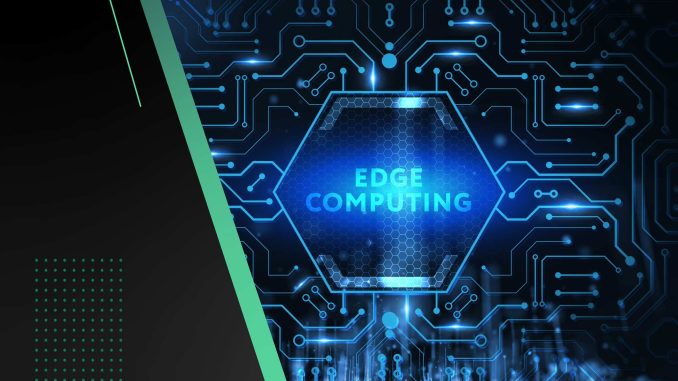
In today’s hyper-connected world, the way businesses and consumers handle data has become more complex and demanding than ever before. With the explosion of smart devices, Internet of Things (IoT) sensors, and real-time applications, traditional centralized cloud computing models are beginning to show their limits. Enter edge computing—a concept that is reshaping how data is processed, managed, and delivered, and becoming a crucial piece of the digital infrastructure puzzle. But what exactly is edge computing, and why does it matter so much in the current and future technology landscape?
At its core, edge computing refers to the practice of processing data closer to where it is generated rather than relying solely on centralized data centers or cloud servers that might be hundreds or even thousands of miles away. Instead of sending all raw data back to a central location for analysis, edge computing distributes that workload to local nodes—whether those are devices themselves, nearby servers, or specialized edge data centers. This shift brings with it several critical advantages, particularly when speed, reliability, and data privacy are key concerns.
To understand why edge computing matters, it helps to consider the challenges faced by traditional cloud-centric approaches. When data from millions of IoT sensors or smart devices is routed to distant data centers, latency—essentially the delay between data creation and processing—can become a bottleneck. For many applications, milliseconds matter. Imagine autonomous vehicles communicating with cloud servers to make split-second driving decisions, or remote medical devices monitoring a patient’s vital signs and alerting doctors in real time. In scenarios like these, relying on distant clouds introduces too much delay, potentially compromising safety and effectiveness.
Edge computing addresses this by pushing computing power to the “edge” of the network. By processing data locally or in nearby edge data centers, latency drops dramatically. Take, for example, a manufacturing plant outfitted with sensors on every machine. Instead of continuously sending vast amounts of data to a remote cloud, local edge servers analyze data streams in real time to detect anomalies, predict equipment failures, and trigger immediate alerts. This kind of responsiveness can prevent costly downtime and improve operational efficiency.
Beyond speed, edge computing also plays a significant role in improving data privacy and security. Certain industries deal with highly sensitive data—think healthcare, finance, or government operations—where regulations demand strict controls on data transmission and storage. By processing data locally, organizations can reduce the volume of sensitive information sent over public networks, limiting exposure to cyber threats and complying with privacy regulations more easily. For example, a hospital monitoring patient data can keep most information within its secure local network, sharing only aggregated or anonymized data with cloud services for broader analysis.
The rise of 5G networks further amplifies the promise of edge computing. With its enhanced bandwidth and ultra-low latency, 5G allows edge devices and servers to communicate more efficiently, supporting applications that require real-time responsiveness at scale. This symbiotic relationship opens the door to innovations such as smart cities, where traffic management systems analyze data from cameras and sensors on the fly to optimize flow and reduce congestion. Similarly, augmented reality experiences in retail or entertainment benefit greatly from edge computing, as real-time processing enhances user interaction without the frustrating lag often associated with cloud-dependent applications.
While edge computing offers clear benefits, it is not without challenges. Deploying and managing numerous distributed edge nodes introduces complexity, especially when it comes to updating software, ensuring consistent security policies, and maintaining reliable connectivity. Unlike centralized clouds, where infrastructure is consolidated and easier to control, edge environments require sophisticated orchestration tools and robust cybersecurity strategies to protect a larger attack surface. Moreover, businesses must carefully evaluate which workloads are best suited for edge processing versus cloud or hybrid models, balancing cost, performance, and compliance considerations.
Despite these hurdles, businesses across industries are already embracing edge computing to gain competitive advantages. Retailers use edge-enabled systems to personalize in-store experiences and manage inventory in real time. Logistics companies optimize fleet management and package tracking by processing data close to transport hubs and vehicles. In agriculture, sensors connected through edge devices monitor soil conditions and weather patterns, enabling farmers to make timely decisions that improve crop yields and sustainability. Each example illustrates how moving intelligence closer to data sources transforms not just technology, but entire business models.
Looking ahead, edge computing is poised to become foundational for the next generation of digital innovation. As the volume and variety of connected devices continue to grow exponentially, the demand for fast, reliable, and secure data processing will only intensify. Businesses that adopt edge computing strategically will be better equipped to deliver responsive customer experiences, optimize operations, and safeguard critical information in an increasingly complex digital ecosystem.
In conclusion, edge computing represents a pivotal evolution in how data is handled—shifting from a centralized cloud-centric model to a distributed approach that brings processing closer to the source. This shift matters because it enables faster decision-making, enhances privacy and security, and supports emerging technologies that demand real-time responsiveness. For business leaders, understanding and leveraging edge computing is no longer a futuristic concept but a practical imperative to stay competitive and innovative in the digital age. As the technology continues to mature, its impact will be felt across virtually every sector, shaping the future of how we interact with data, devices, and each other.